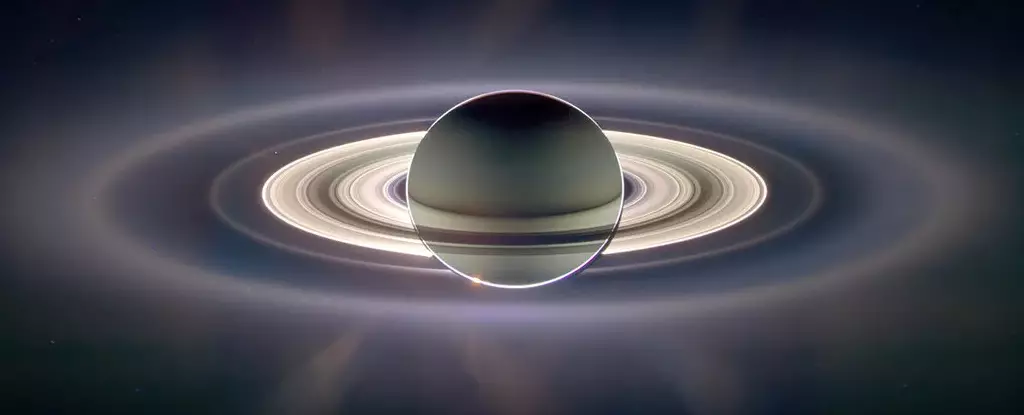Saturn, the jewel of our Solar System, is famously recognized for its resplendent rings that shoot outwards like an artist’s brush strokes across a dark canvas. However, the age and formation of these enigmatic rings remain subjects of much debate and intrigue among scientists. Groundbreaking research spearheaded by teams from the Institute of Science Tokyo and the French National Centre for Scientific Research has recently cast fresh insights on the true age of Saturn’s rings, suggesting they may be considerably older than once believed.
When the Cassini spacecraft was launched in 1997 and reached Saturn in 2004, it was equipped to provide unprecedented levels of data about the planet and its surrounding structures, including its stunning rings. Initially perceived as relatively young, the rings presented a perplexing enigma; they appeared exceptionally clean, stripped of the expected particulate dust that cosmic impacts would naturally deposit over millions of years. This led many scientists to assume that these rings were a recent addition to Saturn’s majestic presence, estimated to be merely between 100 to 400 million years old.
However, the notion of a ‘ringless’ Saturn while dinosaurs roamed the Earth sharply contrasts the majestic image we conjure when we think of the Gas Giant today. As alarming as that image might be, new theoretical modeling challenges the assumption that the cleanliness of the rings is indicative of youth. Ryuki Hyodo, a planetary scientist involved in the research, emphasized that a ‘clean’ aesthetic does not automatically denote the ring systems being recent formations.
This fresh perspective stems from understanding the dynamics at play within Saturn’s environment. While other gas giants like Jupiter, Uranus, and Neptune possess rings, none manage to match the sweeping grandeur of Saturn’s. A pertinent question arises: if Saturn’s rings are indeed ancient, how have they remained so pristine? Hyodo and his team sought to tackle this query by simulating the high-speed collisions between micrometeoroids and the icy particles comprising the rings.
When micrometeoroids—some less than 100 microns in diameter and flying at staggering velocities of over 25 kilometers per second—collide with the larger ice chunks that form Saturn’s rings, interestingly, rather than deteriorating into goop and dust, a process occurs that vaporizes a portion of both the impacting particle and the ice on contact. This vaporization results in nanoparticles, alongside other forms of charged matter, which are then whisked away by Saturn’s magnetic field rather than accumulating on the ice. This mechanism suggests that micrometeoroid impacts would not darken or degrade the rings as was previously assumed, but rather, those very impacts could explain the rings’ projected cleanliness.
The implications of this research stretch far beyond the past—they challenge our understanding of Saturn’s future as well. Previously, observations of massive amounts of water cascading from the rings onto Saturn hinted that these rings were in a state of decay and might vanish entirely in as little as 100 million years. However, Hyodo’s research poses an alternate narrative: could this ‘ring rain’ be the result of vaporized water from micrometeoroid strikes rather than signifying an inevitable decline? If true, this could portend a much longer existence for Saturn’s rings, potentially stretching into the billions of years.
Furthermore, the chaotic history of the early Solar System provides fertile ground for hypotheses regarding the emergence of Saturn’s rings. Scientists surmise that massive collisions between asteroids or protoplanets could have spewed debris into a celestial ballet around the planet, potentially forming the rings we marvel at today. If this theory bears fruit, it would help elucidate many questions surrounding not only Saturn but also the formation of planetary systems as a whole.
Following these revelations, Hyodo and his colleagues remain in pursuit of additional data to solidify these findings. Laboratory experiments simulating micrometeoroid impacts on icy particles are forthcoming, which could further validate the models proposed. As various teams concentrate on potential planetary missions dedicated to Saturn—which could yield more insights into this majestic giant’s rings—one thing is clear: Saturn’s iconic rings could be much more than mere remnants of cosmic calamity; they could be a window into the ancient and turbulent history of our Solar System, and their tale is only beginning to unfurl.

